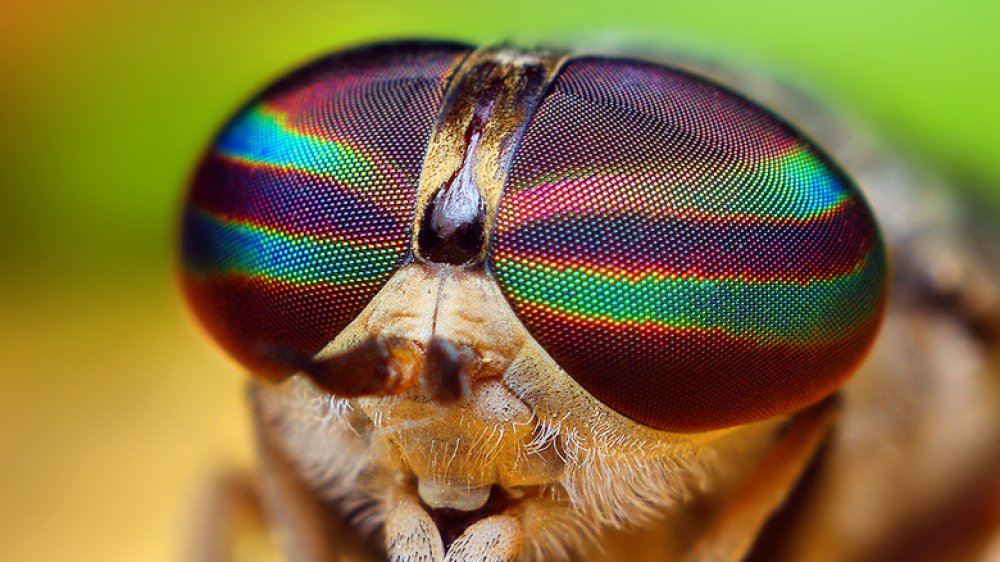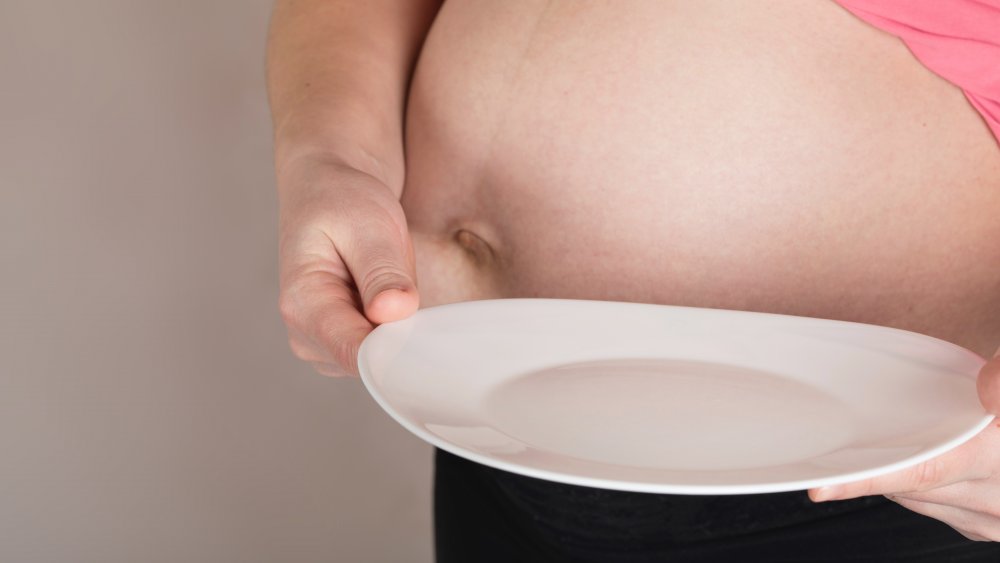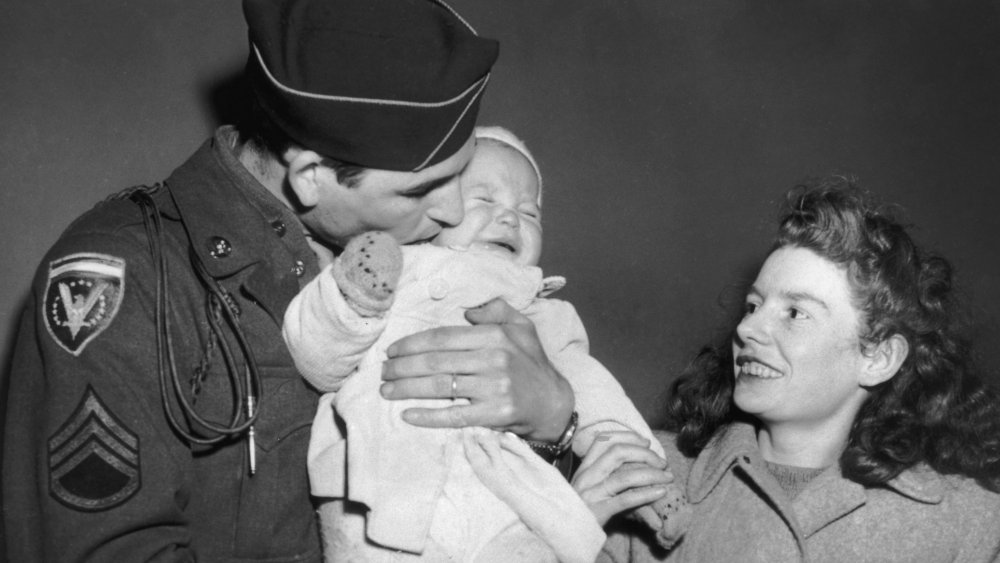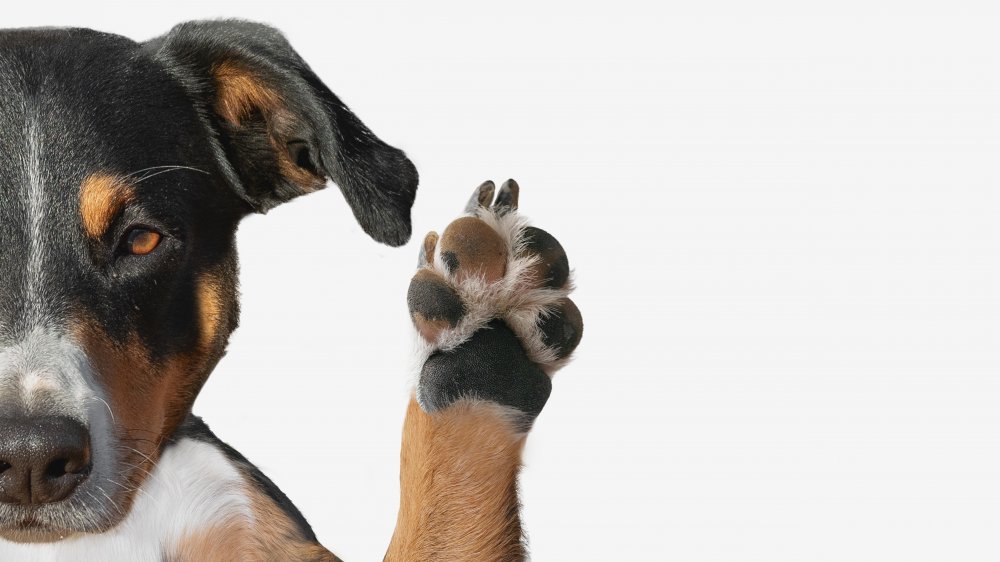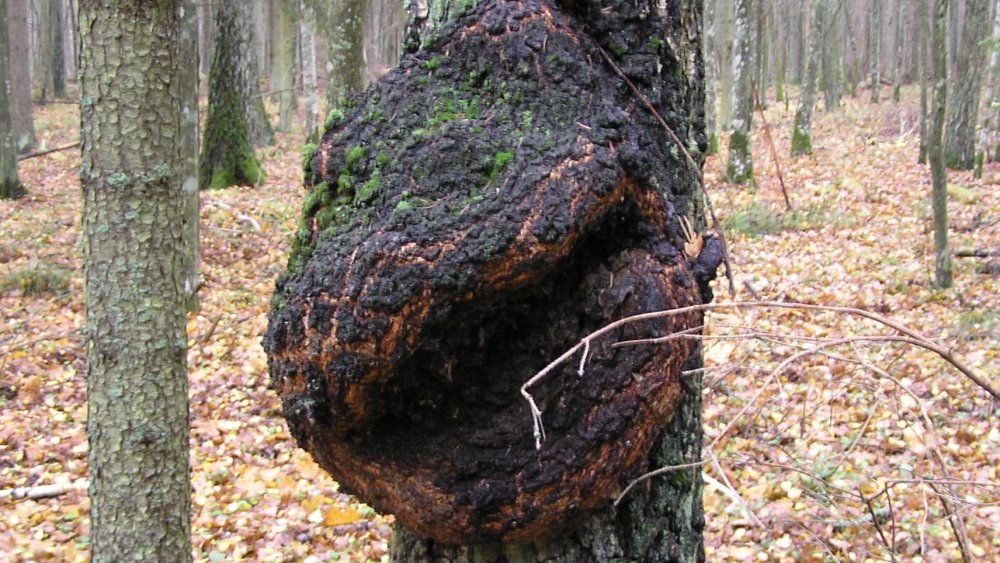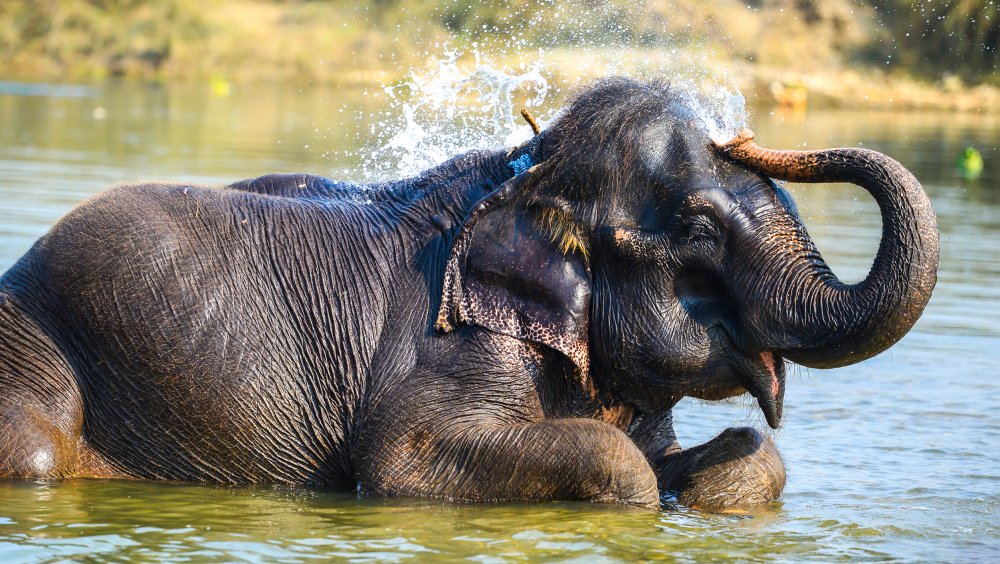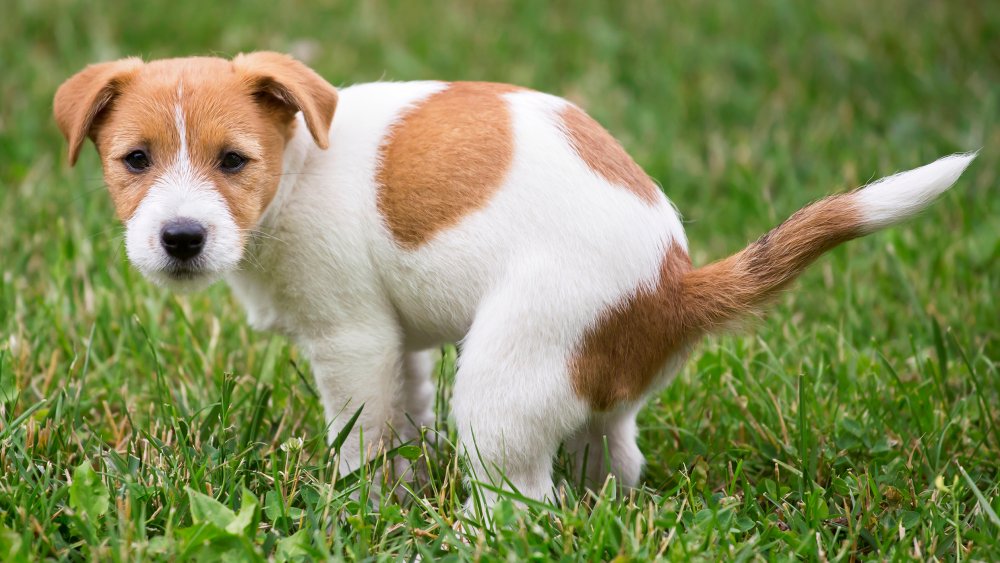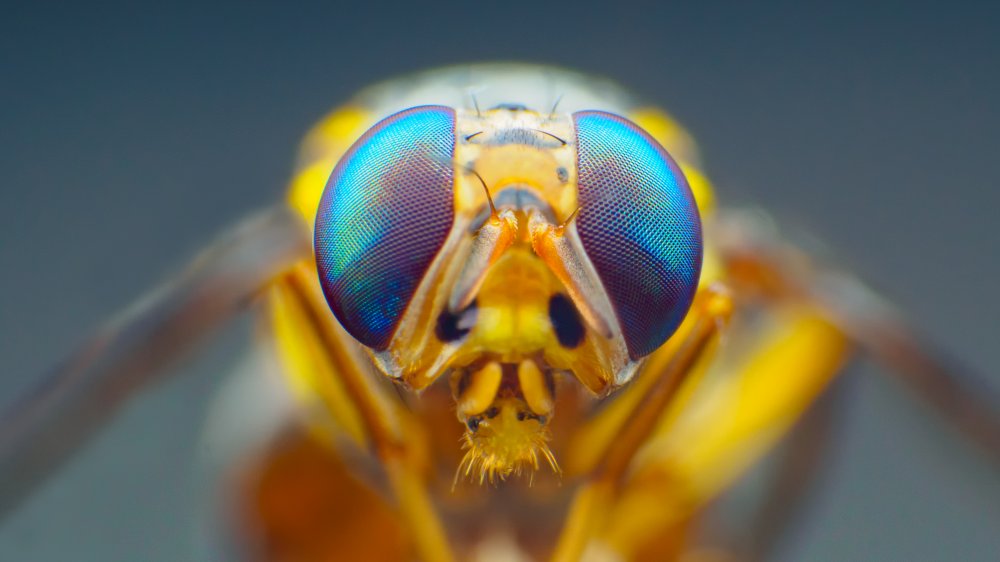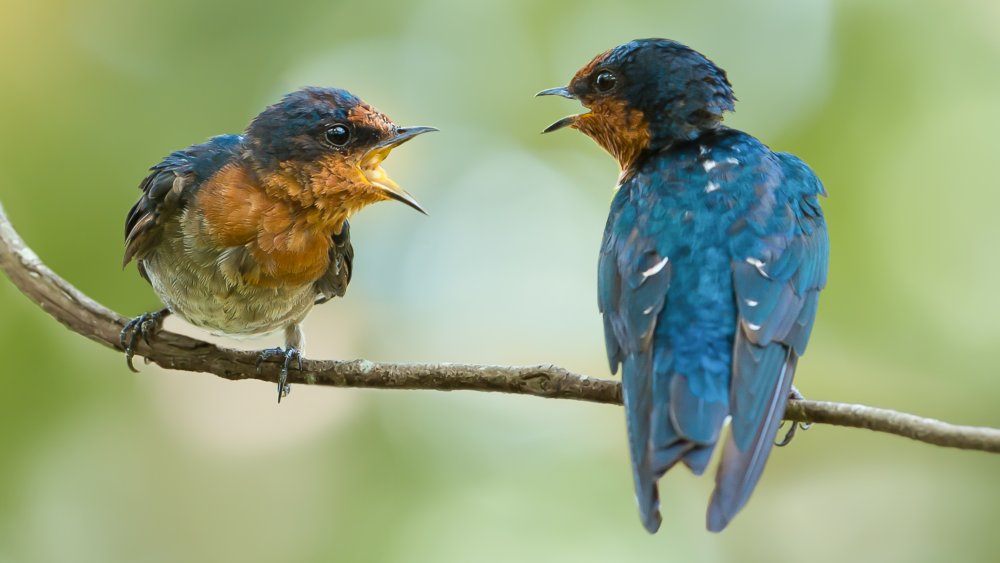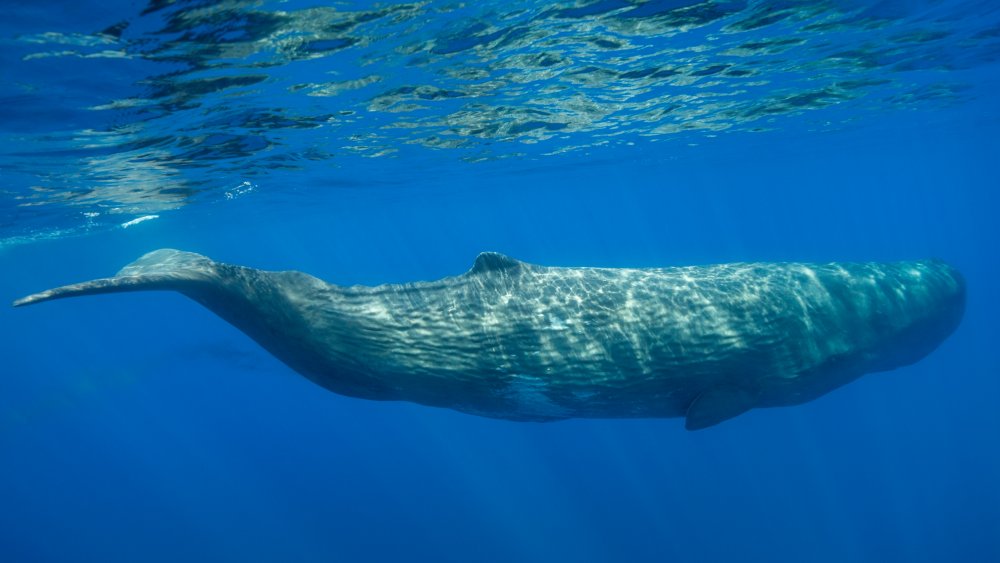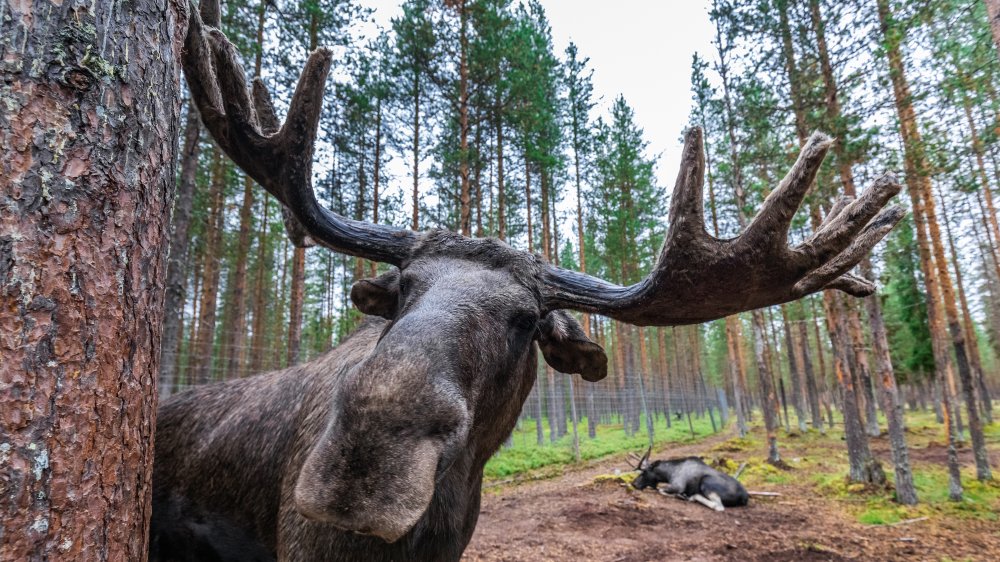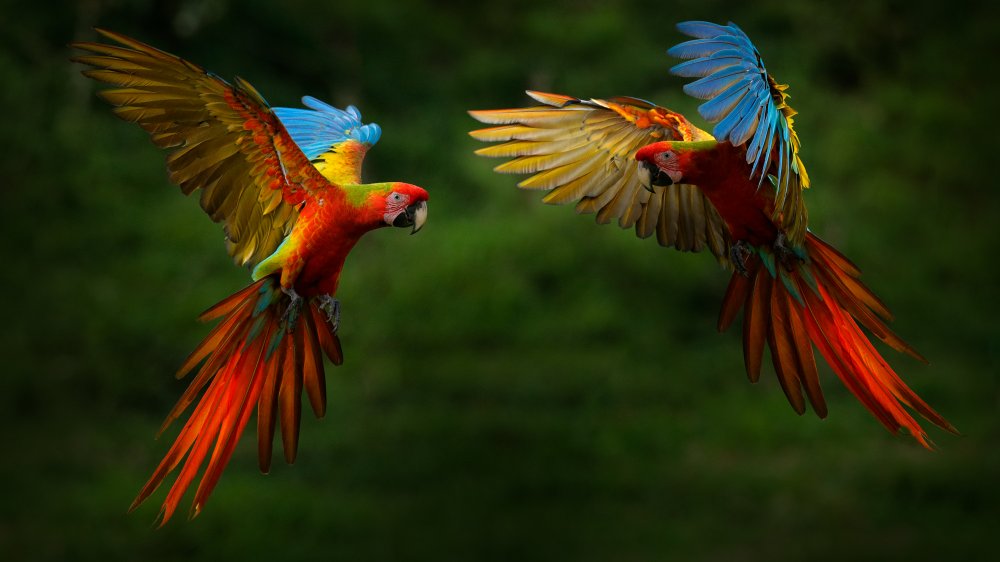The Strangest Laws Of Nature
Like any parent, Mother Nature makes the rules while you live under her roof. You're no doubt familiar with basic laws of nature such as survival of the fittest and look, Simba, everything the light touches is our kingdom. And where would we be without the fundamental principles of physics, which ensure that we won't trip and fall upward into the sky? But not all laws seem as well-grounded as gravity. Some are downright confusing while others are just so weirdly specific or counterintuitive that you may dig a hole in your skull from all the head-scratching you'll do.
In fairness to Mother Nature, she never said her laws had to seem obvious. Besides, you may have noticed that occasionally a parent will make a rule that just seems nonsensical or unnecessary, and when you ask why you have to follow it, the parent inevitably says, "Because I said so." Mother Nature is no exception in that regard. However, some of her laws are exceptional and exceptionally strange.
Hungry mothers have more daughters
Everyone knows that when a woman says she's eating for two, she has a bun in the oven and not the kind you eat unless you're a hamster or or some other cannibal animal that swallows its babies like Cronus at an all-you-can-eat maternity ward. That sort of Swiftian baby-eating is a no-no for a human mommy even when she's literally starving and that little bundle of joy is so cute that she could just eat it up. Instead, as Nature details, "Hungry mothers give birth to more daughters."
Mammals normally produce three percent more males than females, per Smithsonian magazine, possibly to compensate for the fact that males die more often. However, the reproductive calculus apparently changes when deprivation enters the equation. A 1984 study in Nature found that dominant female red deer gave birth to more sons than lower-ranking females that couldn't invest as many resources in their offspring. Providing further evidence, a 1999 study found that nutritional stress lowered the number of sons that dominant red deer had.
A similar trend occurred in human mothers during Mao Zedong's Great Leap Forward, which caused a famine that claimed an estimated 30 million lives. An analysis of the more than 300,000 Chinese women who bore children between September 1929 and July 1982 revealed a sharp drop in male births.
Wartime whoopie results in a male baby boom
War: what is it good for? Absolutely nothing unless you want an explosion of male births. It turns out that during and after wars, men who mount their own D-Day invasion in the bedroom are more likely to father boys than girls. Popular Science writes that some people have interpreted this wartime baby boom as divinely inspired reproduction, the reasoning being that returning servicemen are replacing their fallen brethren with future troops. That's really putting the "infant" in "infantry," but it's unclear how a baby boy would see any combat beyond getting slapped by the doctor.
Newcastle University doctoral student Corry Gellatly came up with a much more fruitful theory. He analyzed reproductive patterns in soldiers, marine worms, and shrimps and noticed that the apple doesn't fall far from the tree when it comes to making new apples. The sons of males who fathered a lot of boys were also more likely to father males. Applied to returning soldiers, it becomes a matter of who's more likely to have sons return from war in the first place. Men more likely to father daughters will inherently have fewer sons go to and make it home from war. So there are fewer of them in the gene pool.
Left-limbed animals see the glass as half empty
As the old joke goes, left-handed people are in their right minds. The Stanford University's Wu Tsai Neurosciences Institute explains that unlike invertebrates, the central nervous system in vertebrates decussates, which is a fancy way of saying that animals with backbones have cross-wired brains while spineless animals don't. Decussation causes the brain's left hemisphere to connect to the right side of the body and the right hemisphere to connect to the left. Some neuroscientists call this the "somatic twist," which sounds like the world's nerdiest Chubby Checker tribute band. But some left-limbed animals have an emotional twist that takes a negative turn.
Psychology professor Stanley Coren writes that the right side of the brain tends to govern reactive behaviors and intense emotional responses such as fear and expressions of aggression. By contrast, the left side corresponds with calmer, more sociable reactions. The right hemisphere is more dominant in left-handers, who on average seem more emotional and more sensitive to stress. This has also been observed in left-pawed dogs. Scientists at the University of Belfast studied canine responses to unfamiliar surroundings and found that dogs that led with their left paws got more stressed out.
But wait. There's more. NPR reports that a 2018 study published in Animal Behavior indicates that left-pawed cats struggle with stress more than their right-pawed counterparts while a 2018 study in the journal Animals suggests that left-sided horses are more pessimistic that right-sided horses.
Plants don't die from cancer
Despite being brainless, plants have more in common with humans than people might realize. A head of lettuce doesn't need a brain when plants have an "internet of fungus" that they use to share nutrients with each other, deliver toxins (presumably their version of malware), or even steal nutrients from their neighbors. Tobacco plants, tomato plants, and trees seem to scream for help using ultrasonic sounds during droughts or when someone cuts them. So the next time you watch Monty Python and the Holy Grail, just remember that the shrubbery King Arthur gave to the Knights who say "Ni!" might have been hurt worse than the knight who lost his knees and arms.
While a shrubbery will never win a sword fight, it's much better than humans at battling cancer, which for plants is just a "flesh wound." Take the Chernobyl disaster for example. According to Popular Science, "humans and other mammals and birds would have been killed many times over by the radiation that plants in the most contaminated areas received," yet for the most part plants survived. While plants can certainly develop cancer, their cells are more rigid than animal cells, thanks to a unique feature called a cell wall. These walls double as a barrier to cancer metastasis, so instead of spreading like wildfire, the cancer remains localized in plants, allowing the rest of their cells to survive.
Most mammals pee for 21 seconds
The expression "draining the pickle" makes perfect sense to male humans but would confuse many other animals and not just because of the language barrier. Private parts come in all shapes and sizes in the animal kingdom, and they aren't all urine faucets. Mallards have corkscrew-shaped peckers, according to IFLScience, raising the question of whether they feel like crazy straws when peeing. But the Audubon Society explains that birds don't urinate, and Smithsonian magazine notes that most bird species don't have dongs at all. Nature's feathered eunuchs don't micturate as strangely as Chinese soft-shelled turtles, which pee 50 times more through their mouths than the other end, via Live Science. Mammals, meanwhile, pee with oddly specific uniformity.
It doesn't matter if it's a Long Dong DeMarco like the elephant, which can use its trunk-like love organ to scratch its belly, or a house cat packing what writer Katie Hoffman describes as "a tiny, threatening d*ck." Mammal species that weigh at least 6.6 pounds (3 kilograms) usually pee in a stream that lasts roughly 21 seconds. Lighter mammals, like bats and mice, release discrete spurts in quick bursts.
How did scientists discover this? Live Science writes that Georgia Tech researchers filmed animals peeing at an Atlanta zoo and viewed 28 YouTube videos of animal urination. Mammals "have urethras of the same aspect ratio," says Lead researcher David Hu, and that's very rare for animal anatomies.
Dogs prefer pooping in a north-south direction
Everybody poops, even plants. But some bodies make stinkies in strange ways. Per Science magazine, evolutionary faecologist Martha Weiss observed that some species of caterpillar fling their Grape Nut-sized excrement a distance equivalent to "a 76-yard field goal in football" to prevent predators from using the smell to track the caterpillars. Wombats produce cubes of poop that they stack on top of each other to communicate and attract mates, according to the BBC. But while these two examples illustrate the genius of Mother Nature's excretory creativity, man's best friend takes befuddling dumps.
As described by PBS, a 2014 study published in Frontiers in Zoology determined that under "calm magnetic field conditions" canines are inclined to "excrete with the body being aligned along the north-south axis" of Earth's magnetic field. Researchers drew that conclusion after documenting the dooking habits of 70 dogs from 37 breeds over a two-year period. They did their business without humans sticking their noses in it and without walls or leashes getting in the way. Over the course of 1,893 poos and 5,582 pees the animals actively avoided going in an east-west direction.
It's unclear if dogs feel physically uncomfortable pointing their pooping posteriors east-west or their butts are guided by mindless instinct. The BBC points out that cattle and deer graze with their bodies aligned with Earth's magnetic poles. So there may be a broader phenomenon at play.
Smaller animals see the world in slower motion
"Live fast, die young" seem like words that small animals live by shortly before dying. Their life spans are short like their bodies, but they pack a lot of action into their tiny timeline. Speaking with the BBC, University of Liverpool microbiologist João Pedro Magalhães explained that by and large, smaller animals mature faster, produce more offspring, and have more predators to worry about than behemoths like elephants. And anyone who's ever tried to murder a housefly knows that people who claim they wouldn't hurt a fly secretly mean they couldn't hurt a fly because when they tried, that migraine with wings was just too darn fast.
Smaller animals that are fleeing for their lives always seem to be one step ahead despite having one foot in the grave. But in the eyes of a fly the world doesn't go by in a flash but moves slowly, sort of like how the Flash sees it. In fact, flies process visual information four times faster than humans, per the BBC. Scientists at Trinity College Dublin determined this after looking at how quickly various creatures see light. Birds and small mammals also have speedier peepers. Not much gets by them, so things appear to move at a snail's pace. For humans, eye speed is size- and age-related, with older people taking in less information than young people. So the world passes you by faster as you approach death.
Many animals take turns communicating
Dr. Doolittle did little to teach humanity how to talk with the animals, but humans can learn something by watching the animals talk to each other. It's clear that Mother Nature raised them right because they're polite enough to take turns when communicating instead just trying to talk over each other. As Smithsonian details, a scientific review of more than 300 studies demonstrated that when communicating, birds, mammals, frogs, and even insects wait their turn to "speak."
The average amount of time an animal waits to respond varies by species. Humans usually wait 200 milliseconds, though the pause is longer in certain contexts. By comparison some species of songbird pause for less than 50 milliseconds, according to Newsweek, while sperm whales wait about two seconds during their exchanges. These pauses are so reliable that some species exploit them to one-up romantic rivals. If a male antbird is flirting with a lady, for instance, another antbird might butt in during the pause and call more loudly in hopes of diverting her attention.
Heat turns some animals into hotheads
There's a reason ill-tempered people are called hotheads. Heat increases aggression whether you're a man, man's best friend, or man's less chummy animal acquaintance. For instance, the BBC cites London Metropolitan Police records showing that between 2010 and 2018, harassment and weapon offenses were 16 percent higher when temperatures exceeded 68 degrees Fahrenheit (20 degrees Celsius) than when temperatures dipped below 50 degrees Fahrenheit (10 degrees Celsius). By contrast, burglaries fell 20 percent. Once the weather gets "too hot," all crime declines.
In 2017, Drexel University researchers found that the City of Brotherly Love has more of a Cain and Abel dynamic when temperatures rise. Between 2006 and 2015, violent crime in Philadelphia spiked on warmer days regardless of the season, via Science Daily. Speaking of biblical villainy, when snakes overheat, they want to devour the first thing they see, per IFLScience. In the heat of the moment, occasionally a confused snake tries to eat itself.
Fish living on the Great Barrier Reef also get heated when waters get warmer, according to Science Alert. A 2009 study demonstrated that increasing the temperature a couple of degrees could cause a 30-fold increase in aggression and activeness among fish with aggressive dispositions. Even mellower fish got slightly more aggressive. Similarly, in the dog days of summer, canines are more likely to attack. As Psychology Today describes, data collected by Chinese researchers shows "a strong relationship between daily temperatures and people reporting to hospital for dog bites."
The smaller the animal, the larger the sperm
People tend to expect a certain anatomical proportionality in their animals. That's why when a man has large hands, you don't expect him to have a tiny head between his shoulders. So when an animal appears to be packing a bazooka between its legs, you wouldn't expect the ammo to be the size of a BB gun pellet just like you wouldn't expect a tiny love pistol to fire a rocket. But in the animal kingdom, big things often come in small packages.
In an extra preposterous example, the University of Zurich observes that the fruit fly Drosophila bifurca measures just a few millimeters in length but makes sperm that stretches nearly six centimeters, or about 20 times longer than the fly producing it. Meanwhile, whale sperm reaches a measly one-tenth of a millimeter in length, making its swimmers a thousand times shorter than the fruit fly's. In that same vein, mice have bigger sperm than elephants, raising the question of whether the massive pachyderms are scared of mice or just envious.
Why the massive sperm disparities? The University of Zurich argues that large sperm become less effective reproductive tools in large animals because when they enter a female, there's a whole lot of room to get lost before reaching the egg. That makes quantity more important than size. Fruit flies have a much smaller gap to bridge, so their sperm can be bridge-length.
Many animals engage in self-love
In Know Thyself, a 19th-century treatise on the ups and downs and ins and outs of the bedroom mambo, an author using the pseudonym Eugene Becklard M.D. claims, "Many physicians of high authority have maintained that two-thirds of the diseases to which the human race is liable have had their origins in certain solitary practices." In other words, doctors used to believe doing the forbidden dance without a partner was behind most illnesses. But if getting to know yourself biblically is that dangerous, then presumably it's also responsible for mass extinctions because a bunch of animals are very into self-knowledge. Though, obviously the T-Rex didn't rub himself out of existence because his arms were too short.
But in all seriousness, loads of animals pleasure themselves. As Live Science describes, walruses enjoy tasting their own love tusks, moose supposedly engage in bull-winking by rubbing their antlers against trees, and birds will rub their love bits against toys, perches, or human hands. Even porcupines get in on the solitary action, grinding against sticks. Canines are legendary horndogs that will lick their own corn dog, and the list of sinners goes on and on. At least in humans, tickling the pickle can increase the number of swimmers in a dude's pickle juice, but many animals stop before that point, so there may be some other benefit.
Biodiversity is greater near the equator
If you don't want to feel like a frozen dinner, you shouldn't live in a place that gives you frostbite. If that describes your philosophy on amputations, then the latitudinal gradient is the law for you. It basically holds that more plant and animal species live near Earth's warm and toasty middle than at the colder reaches of the planet. But there's no obvious evolutionary reason that there couldn't be just as much variety farther north and south. Scientists have wrestled with this mystery for over 300 years without pinning down an explanation, via the Journal of Biogeography. Researchers have offered anywhere from six to 32 competing hypotheses, which seems a bit excessive.
While it might feel like there are nearly as many theories about the latitudinal gradient as there are species in the tropics, University of Chicago professor David Jablonski offered a hypothesis that merits mentioning. UChicago News explains that Jablonski believes the tropics are better at accommodating creatures with with specific survival needs. But as one travels toward the poles, the environment gets more inhospitable, and at a certain threshold of harshness the more specialized organisms go, "Screw that." Evidence of bird and bivalve diversity seem consistent with the idea.
